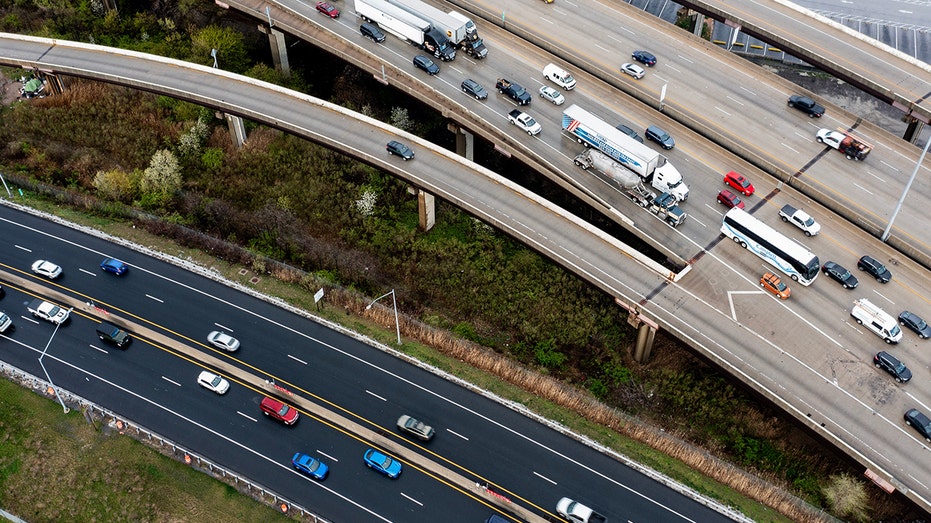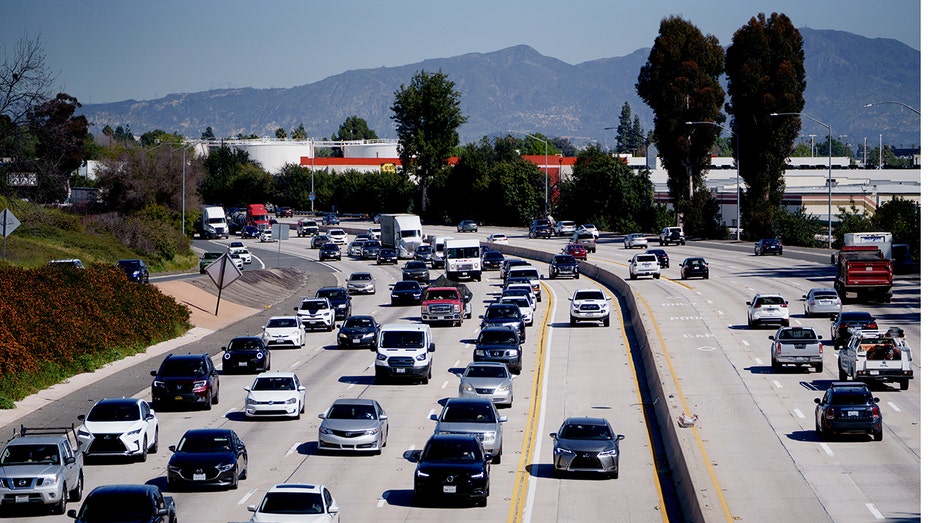Nevada ranked the second-highest auto insurance rates in the country, according to Insurify.
The cost of new and used vehicles may have fallen from the highs of 2021, but surging insurance premiums and rising financing rates are still making it far more expensive to own a car.
New internal data published by Bank of America on auto loan origination suggests that overall car sales are flattening – likely due to worsening affordability issues.
“One reason for this flattening, we believe, is that the total ‘all in’ cost of ownership – including elevated interest rates, insurance, and maintenance costs – has become more expensive even as auto prices are declining,” Bank of America Institute economists said in an accompanying research note.
Higher interest rates
Car prices surged in the early days of the pandemic for a number of reasons. The government sent millions of Americans stimulus checks, boosting demand. That coincided with a shift away from public transportation and a supply chain crisis that significantly reduced the availability of key parts needed for new vehicle manufacturing.
INFLATION INCREASES 3.4% IN APRIL AS PRICES REMAIN ELEVATED
“As a result, there was a steep drop in domestic inventories, which resulted in a surge in the sticker price for new vehicles,” the economists said. “And with consumers unable to find or afford a new model, they moved into the used market, steeply increasing prices there, too.”
Used cars are offered for sale at a dealership on July 11, 2023, in Chicago, Illinois. (Scott Olson/Getty Images / Getty Images)
Supply chain disruptions have since cleared up, and vehicle prices have started to cool. Yet auto sales data indicates that vehicle loan originations for both new and used cars and trucks have fallen from their peaks in 2021 and 2022.
One reason could be that interest rates for car loans have risen sharply since April 2022, jumping almost four percentage points for 48-, 60- and 72-month loans. This translates to nearly a $100 monthly payment increase for a $51,200 loan, which is the cost of the average new vehicle loan, according to the report.
AUTO INSURANCE RATES CONTINUE TO SKYROCKET WITH NO IMMEDIATE SIGNS OF RELIEF
Rising insurance premiums
Insurance rates are also surging.
The cost of auto insurance jumped 1.8% in April, bringing the total annual gain to 22.6% – the fastest yearly rate on record, according to Labor Department data. When compared with the beginning of 2021, before the inflation crisis began, motor vehicle insurance is more than 50% more expensive.
Experts say the problem could soon get worse before it begins to improve.

Traffic on I-95 in Baltimore on April 4. (Nathan Howard/Bloomberg via Getty Images / Getty Images)
“With car insurance, it’s something that’s been building up for a while now,” Shannon Martin, a Bankrate analyst, previously told FOX Business. “Car insurance tends to be very reactionary, so in the past few years, the industry has experienced a lot of losses during a time when inflation has caused the cost of vehicle parts, different products and repair costs, to increase.”
In 2023, the average U.S. rate for full auto insurance surged to $2,019, a 24% increase from $1,633 in 2022 and a nearly 29% jump from $1,567 the previous year, according to Insurify, an insurance comparison shopping site. That amounts to roughly 3.4% of the median household income. Even a bare-bones policy required by states climbed to $1,154 per year in 2023.
HIGH INFLATION IS COSTING AMERICANS AN EXTRA $1K A MONTH
The national average cost of car insurance hit $2,314 per year for full coverage as of April, according to a separate Bankrate database. That amounts to about $193 a month for full coverage.
Several factors have caused the spike in car insurance rates.

Traffic on the 405 freeway in Los Angeles on April 2. (Eric Thayer/Bloomberg via Getty Images / Getty Images)
When the price of new and used cars rose after the pandemic, so too did the cost of repairing or replacing an old vehicle.
On top of that, the country is grappling with a shortage of mechanics, which is driving auto repair costs even higher. One source, the TechForce Foundation, estimates the number of graduates completing post-secondary programs in the automotive sector has plummeted by 20% since 2020. The number of automotive technicians is projected to continue decreasing in the coming years.
GET FOX BUSINESS ON THE GO BY CLICKING HERE
| Ticker | Security | Last | Change | Change % |
|---|---|---|---|---|
| PGR | PROGRESSIVE CORP. | 209.38 | -1.80 | -0.85% |
| SAFT | SAFETY INSURANCE GROUP INC. | 76.26 | -1.09 | -1.41% |
| MCY | MERCURY GENERAL CORP. | 55.56 | -0.27 | -0.48% |
| ALL | THE ALLSTATE CORP. | 164.12 | -3.40 | -2.03% |
Car insurance companies are also trying to make up for steep losses incurred in 2021, which saw a sharp rise in fatal car accidents.
“Everyone was using their car insurance a lot then,” Martin said. “And then inflation started to kind of continue to grow, and insurance carriers filed for rate increases to, in a way, recoup the money they lost during that time.”


